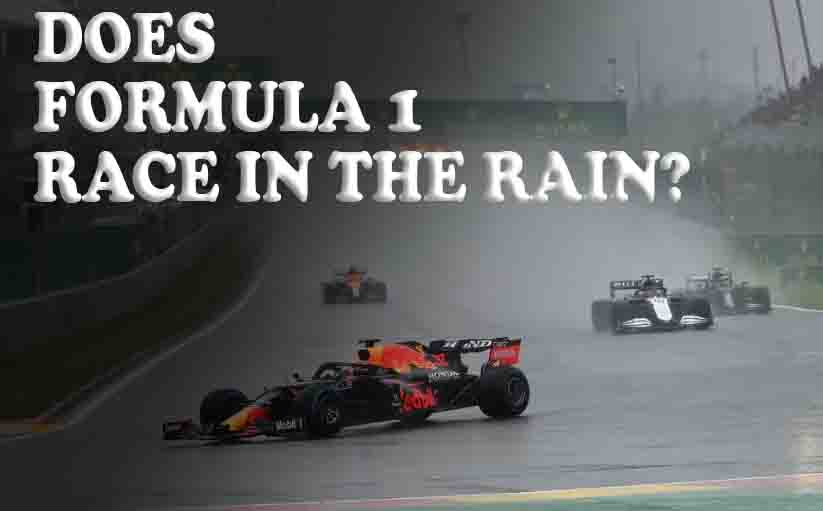The weather is always changing. One day it’s sunny and warm, the next it’s rainy and cold. We’ve all seen this happen. But what if I told you that the weather is actually going to change again? What if I told you that we’re going to experience a sudden change in weather that will cause all of us to have a completely different view of the world? It sounds crazy, right? Well, it’s not that crazy. In fact, it’s happening right now. This week, we’re going to look at how we can use science to prove that the weather is changing, why it’s changing, and what it means for us.
In this post, we will discuss the different types of rain, and whether Formula 1 racing should be held in the rain or not.
Table of Contents
Rain in F1 and Other Motorsports
NASCAR drivers are accustomed to racing through rain and even thunderstorms on the weekend. And you’ll be amazed to discover the same thing about Formula 1 racing when you read this book. Racing-tire companies often delay events for bad weather because they want to keep the drivers from slipping around on the slick tires, which means a chance of losing traction. Formula One races are different because they have different tyre options to ensure drivers can race safely when the track is wet.

Why Does Formula 1 Race in the Rain?
Formula One cars can race in the rain because Pirelli manufactures two different tyres for wet conditions. Tread patterns used on wet tires are similar to those used on cars. These tread designs can move water out from under the vehicle. There are many ways that F1 cars go faster than 185 miles per hour. This waterproofing spray keeps water from getting through to the bottom of the vehicle and damaging its suspension or interior.
Any Problems Using Wet Tires in F1?
F1 racing cars produce a lot of downforce because they’re very aerodynamic. However, having a tire that is too wet makes them heat up quickly and wear out faster than they should. Running your tires on the wet part of the track or splashing your tires in standing water to cool them down to maintain tire integrity.
Tread patterns are found in both wet and dry tires. Tread patterns increase tire life and help decrease water retention, but also cause wear. However, if rainy conditions stop a track may need a few hours to dry out, and it’s very important to get the right kind of wet track spray. Intermediate tires for these transitional periods mean drivers can safely make their way around the track before the road dries out and slick tires can be used.
Can an F1 Race be Delayed or Postponed for Rain?
The rules for the drivers of a race are very strict: If it rains before the start of the race, you can’t postpone the race for the weather. A Formula One race is a long event, and once the green flag drops, teams are expected to take the checkered flag within 2 hours, so it’s important to break down the race as soon as possible. So there are likely to be some delays in your race, but there’s no guarantee that a delay won’t happen.
Are there Special Rules for Driving in the Rain?
Racing cars must not travel over 110mph during heavy rain. It all starts behind a safety car for a few laps. This allows the racers to get their tires to dry out while navigating the track. The FIA does not allow using DRS on a wet track because they do not want cars to slide out and cause serious accidents. Sometimes the conditions on the track change, and it’s up to F1 teams to tell their drivers when to pit so that they can change their tires and continue the race safely.
That’s why drivers get nervous at the start of every race and sometimes won’t want to pit when their tires are inherently slower than racing slicks. During the 2021 Russian Grand Prix, Lando Norris decided to try to finish the race on slick tires, despite heavy rain on one portion of the track. He started at the back of the pack as he approached the wet part of the track, so he spun out, losing his lead to Lewis Hamilton, who had already pitted earlier in the race.
Conclusion
In conclusion, the team was surprised by the weather conditions, which were much more challenging than expected. They knew that they would be racing in the wet, but not in such high winds. They also knew that they had to race at full speed to be able to overtake the other cars.
